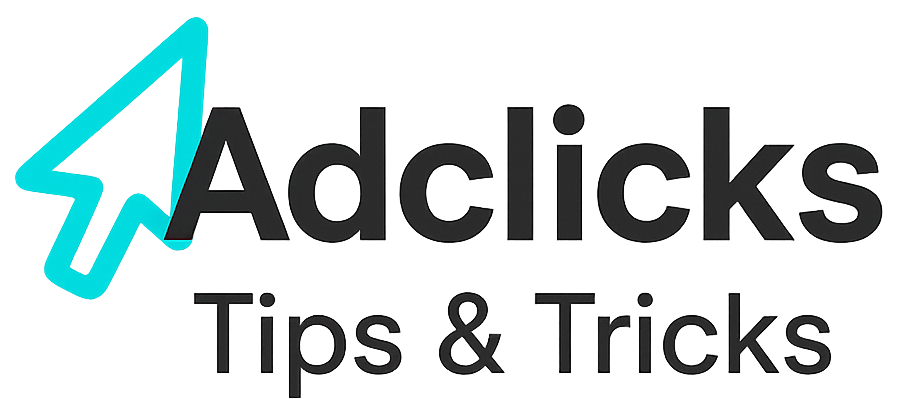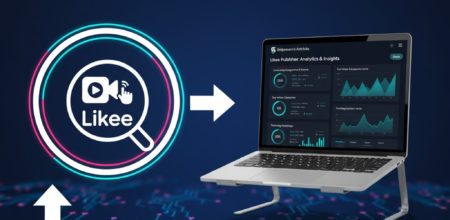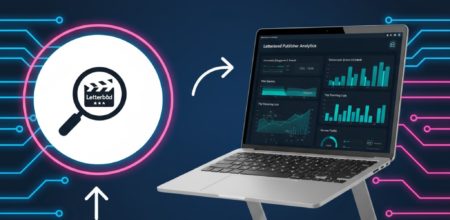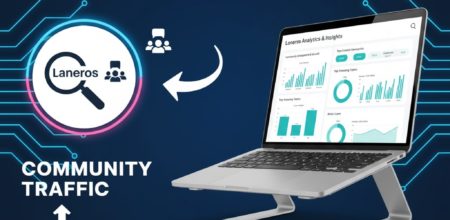iNaturalist is a citizen-science platform where people record biodiversity: users upload observations of organisms (photos, audio, date, location), the community suggests identifications, and high-quality records become “research grade.” That workflow has made iNaturalist one of the most widely used biodiversity data sources globally.
For publishers, this matters because iNaturalist concentrates nature-curious readers in one place. They come to learn, verify, and discuss. If you publish field guides, regional ecology pieces, eco-travel, photography tutorials, outdoor skills, or science explainers, you’re speaking the audience’s language—and Adclicks can quietly monetise that engagement when visitors land on your site without turning learning into a hard sell.
Audience Snapshot: Who Uses iNaturalist
The web audience skews slightly female (~55%) with the largest age group 25–34, and strong English-speaking representation. This is an evidence-seeking crowd that reads tooltips, opens maps, and follows taxon threads; they value accuracy over hype. Country share is led by the United States, followed by Mexico, Australia, Canada, and Colombia, with meaningful long-tail global use. Similarweb
That mix is perfect for publishers who pair curiosity with clarity. Think concise, well-illustrated posts that resolve a specific nature question. When those users click through, Adclicks works best in clean layouts where ad units sit between logical content blocks—supporting the read rather than interrupting it.
Scale and Momentum: Traffic and Data Growth
iNaturalist’s own milestones show sustained growth: by June 2025 the platform had surpassed 250 million verifiable observations from nearly 4 million observers and 400,000+ active identifiers. The public /stats dashboard also charts active users, new users, and research-grade totals over rolling 100-day windows.
For publishers, this means a steady influx of fresh content and search demand—new species posts, seasonal trends, and location spikes you can mirror in your editorial calendar. When a migration or bloom peaks in iNaturalist, a timely explainer on your site—monetised via Adclicks —can capture high-intent readers without chasing viral shortcuts.
Core Features That Drive Discovery
Observations are the heart of iNaturalist: each record can include media, precise time/place, and community IDs that elevate quality. Projects let communities, parks, classes, or campaigns collect related observations under one page, complete with a project journal for updates. Those journals and personal journals support narrative posts, announcements, and field notes.
Because projects and journals live on public pages, they function as natural hubs. If you publish trail guides, restoration diaries, or species spotlights, you can reference project pages, then invite readers to your site for the full resource. Keep Adclicks placements light and context-aware (after the first two paragraphs, mid-article, and footer) so the science-minded audience stays engaged.
Linking Out: What iNaturalist Allows (and Where)
iNaturalist supports outbound links in several contexts. Users routinely share direct URLs to filtered observation sets (by date, place, or taxon), and community threads recommend copying those query URLs for sharing. Linking related observations is commonly done via comments, and project or user journals can include external references, though formatting behaviour varies by editor and context.
This means you can guide readers to curated iNaturalist queries (e.g., “all late-September dragonflies in X county”) and, conversely, invite the iNaturalist community to your site for deeper coverage of the same topic. Once on-site, Adclicks should follow the reader’s path—place units where scrolls naturally pause (after maps, galleries, or key callouts).
Culture: Accuracy First, Community Always
The platform’s social layer is built around collaborative identification and respectful discussion. Posts that show methods (how you got the ID), cite sources, and acknowledge uncertainty earn trust. Quick-win posts that over-promise or bury details tend to stall. The best contributions feel like annotated field notes with receipts.
Publishers who meet that tone—clear methods, honest limits, quick references—get the clicks that matter. Design your landing pages like lab notebooks with polish: crisp headings, labelled images, and a short “How we know” box. Adclicks then rides along as page furniture—visible, relevant, never pushy.
Where Your Site Can Win: Publisher Fit
If your site offers species explainers, local natural-history stories, tools for identification, field photography tips, foraging safety, or conservation reporting, you’re a fit. Education providers (outdoor schools, museum blogs, park programs) can also align—class projects on iNaturalistoften need richer background reading.
Even general-interest publishers can succeed by carving nature micro-beats (e.g., backyard moths, urban lichens, pond life). Treat iNaturalist as the evidence well, then publish approachable explainers. When readers cross over, Adclicks helps you sustain that beat financially without turning every article into a funnel page.
Timing and Topics: Follow the Seasonal Pulse
Observation activity surges with seasons, migrations, blooms, and city bioblitzes. Forum threads reveal annual patterns (e.g., identification bursts outpacing observations in some years) and leaderboards showing prolific observers. Align content to these pulses: “What’s flowering now,” “How to spotfall migrants,” or “City Nature Challenge cheat-sheets.”
When you mirror those peaks, your posts feel timely inside iNaturalist and in search. Pair each piece with a simple visual key or downloadable card on your site. Those artefacts increase dwell time—good for readers and for Adclicks viewability—without cluttering the narrative.
Practical Linking Patterns That Earn Clicks
Three patterns work well. First, “curated queries”: share a live iNaturalist link (place+date+taxon) and invite readers to your full guide that explains what to expect and how to ID look-alikes. Second, “project companions”: post updates in a project journal and point to your deeper methodology article. Third, “observation stories”: narrate one record’s ID journey and link your site for the full photo set or technique.
Each pattern respects iNaturalist’s evidence-first ethos and gives a clean reason to click. On arrival, keep page weight low, captions useful, and Adclicks units paced after value—intro, mid-body, and end. That cadence sustains reading while making monetisation predictable.
Regional Angles and Localisation
Traffic skews to the U.S., but substantial interest exists in Mexico, Australia, Canada, and Colombia, plus a long tail worldwide. If you operate in those regions, local pages (place-specific lists, seasonal calendars, safety notes) will outperform generic explainers.
Localised pages lift search relevance and share value back into regional projects on iNaturalist. Build light “What’s around me” hubs per region, then link to living queries on iNaturalist. Visitors who see their backyard reflected stay longer, which makes Adclicks more effective without increasing unit density.
Evidence Hubs: Projects and Journals as Bridges
Projects gather observations; journals tell the story. Use journals to announce surveys, methods, or “what we learned” posts that tease deeper analysis. Help docs confirm each project has its own page and journal space—great for pointing to external primers, gear lists, or safety guides on your site when appropriate.
Treat those journals like lab newsletters: short update, one visual, one link. Readers who want depth will follow to your site; readers who don’t will still engage in comments. Either outcome is goodwill. With that goodwill, Adclicks can monetise repeat visits gently over time.
Friction Points: What to Avoid
Journal editors and link rendering can be inconsistent: some anchors may not behave as expected, and external link previews aren’t guaranteed across forums or journals. Users often share direct URLs or drop links in comments as a practical workaround. Set expectations: “Full method + images on our site—link below.”
Keep redundancy low—one strong outbound link per post beats many weak ones. And never gate essential info behind intrusive elements. The iNaturalist audience is allergic to bait-and-switch. Let Adclicks complement the read with clear, relevant placements instead of pop-ups.
Measuring Success Without Overcomplicating It
Use UTM parameters on every iNaturalist-origin link so you can compare session duration, scroll depth, and return rate to other sources. Watch for seasonal spikes and taxon-specific winners, then build more of what holds attention.
In most cases you’ll see fewer visits than from mainstream social—but higher intent. That’s the traffic Adclicks thrives on: long reads with natural pauses, where well-placed banners are actually noticed rather than ignored.
Building a Repeatable Loop
Think in short, themed runs (two to four weeks). Publish an anchor explainer on your site, then feed iNaturalist with project journal notes, curated queries, and one observation story that all point back to the explainer. Update the explainer as comments surface new details.
This loop keeps content fresh on both sides and encourages return visits. Over time, readers learn that clicking your link yields clarity, not clutter—which is precisely when Adclicks becomes a steady revenue layer instead of a distraction.
Action Plan: 8 Steps to Turn iNaturalist into Quality Traffic
- Identify three live pulses (seasonal taxa, local projects, or bioblitzes) and set a two-week content run for each.
- Publish one anchor explainer per pulse on your site; keep pages fast, scannable, and image-forward with Adclicks placed after value.
- Build curated iNaturalist queries (place+date+taxon) and save the URLs for sharing.
- Post a project journal update that summarizes the “why now” and links once to your explainer.
- Share one observation-story post in community channels, linking to the full photo set or method on your site.
- Tag all outbound links with UTMs; compare dwell, scroll, and return vs. other sources on a weekly basis.
- Localise: spin regional subpages for your best-performing countries or cities and pair them with matching queries.
- Iterate placements: move Adclicks units to the first natural pause and mid-article break; avoid crowding above the fold.
If you want, I can convert this into a shorter public-facing guide or attach live examples of curated query links and journal posts to model the flow end-to-end.
Relevant Links
- Support: https://support.snipesearch.co.uk/
- FAQ: https://adclick.snipesearch.co.uk/index.php?page=index/faq
- Contact Form: https://adclick.snipesearch.co.uk/index.php?page=user/support
Stay Connected
- Snipesocial: https://www.snipesocial.co.uk/pages/snipesearch
- Twitter: https://twitter.com/snipesearch_uk
- Facebook: https://facebook.com/snipesearch
- LinkedIn: https://linkedin.com/company/snipesearch/
- VK: https://vk.com/snipesearch_uk
- Focus: https://focus.xyz/snipesearch
- YouTube: https://youtube.com/@snipesearch
- diaspora: https://diaspora.snipesearch.net/people/7431fcf0806c013e936e00163c6e7bdf
- Friendica: https://friendica.world/profile/snipesearch
- Hi5: https://www.hi5.com/snipe5
Analytic Tools
StatCounter: https://statcounter.com/
Rommie Visitor Analytics: https://rommie.net/




